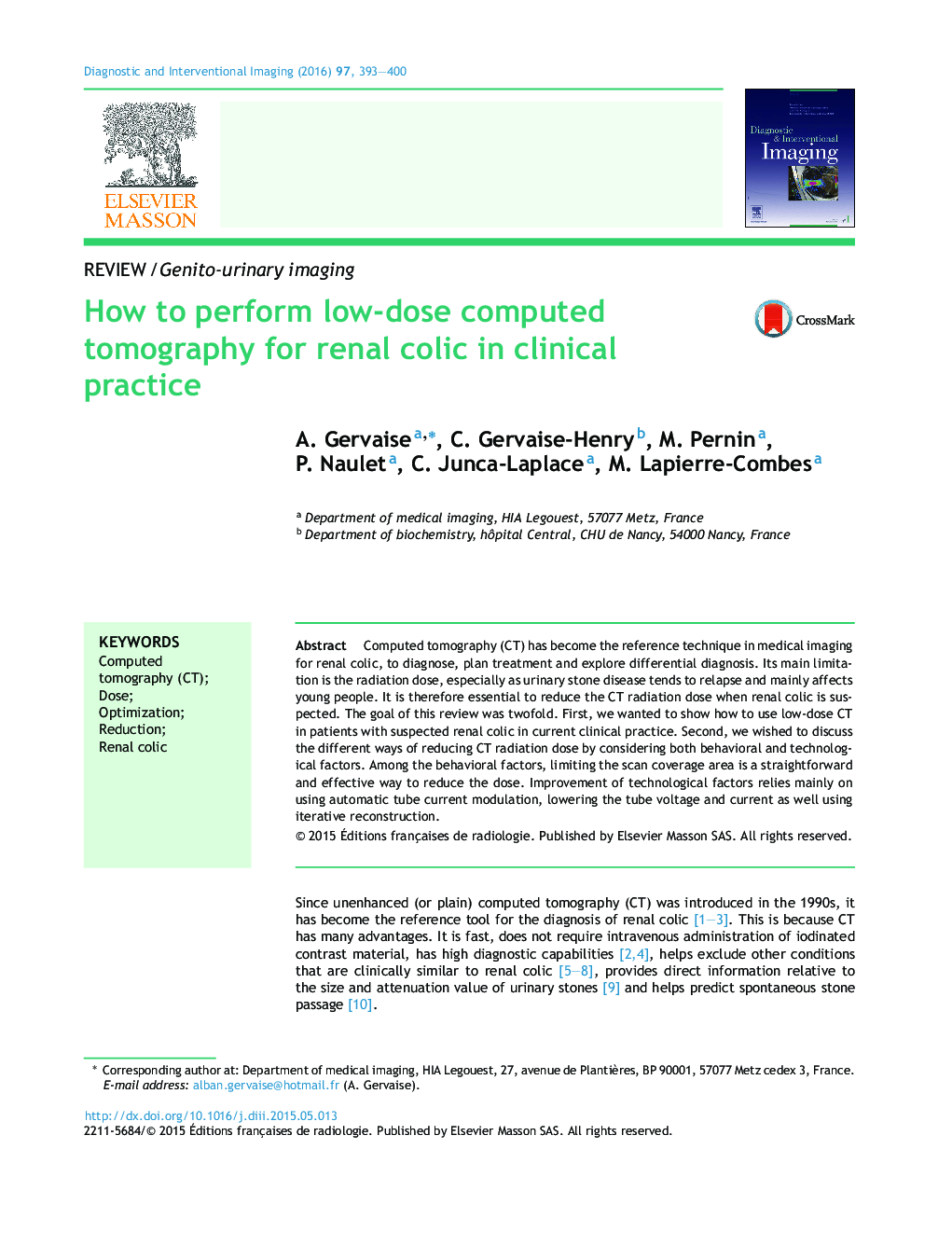| Article ID | Journal | Published Year | Pages | File Type |
|---|---|---|---|---|
| 5880358 | Diagnostic and Interventional Imaging | 2016 | 8 Pages |
Computed tomography (CT) has become the reference technique in medical imaging for renal colic, to diagnose, plan treatment and explore differential diagnosis. Its main limitation is the radiation dose, especially as urinary stone disease tends to relapse and mainly affects young people. It is therefore essential to reduce the CT radiation dose when renal colic is suspected. The goal of this review was twofold. First, we wanted to show how to use low-dose CT in patients with suspected renal colic in current clinical practice. Second, we wished to discuss the different ways of reducing CT radiation dose by considering both behavioral and technological factors. Among the behavioral factors, limiting the scan coverage area is a straightforward and effective way to reduce the dose. Improvement of technological factors relies mainly on using automatic tube current modulation, lowering the tube voltage and current as well using iterative reconstruction.
